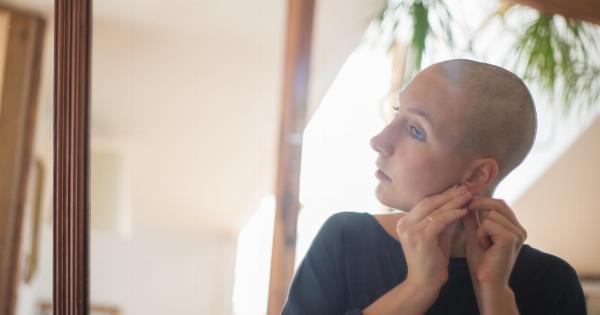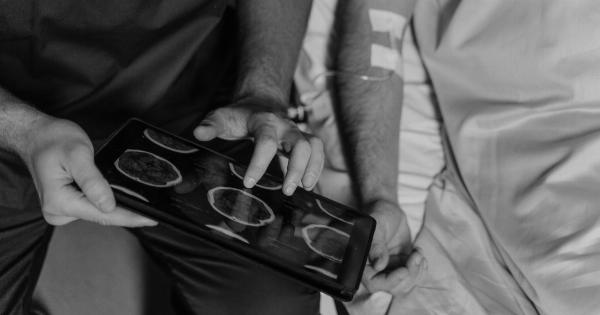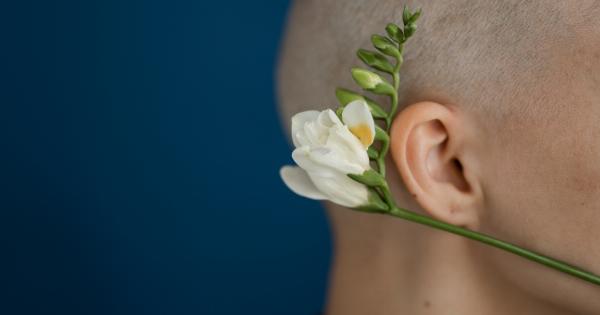When it comes to cancer detection, scientists and researchers are constantly exploring new and innovative methods.
One particularly fascinating approach involves the use of insects, specifically their highly sensitive olfactory systems, to detect the presence of cancerous cells. This unconventional method shows promise and could potentially revolutionize early cancer diagnosis.
How Insects Detect Cancer
Contrary to popular belief, insects have an incredibly sophisticated sense of smell. Their olfactory systems are finely tuned, allowing them to detect even the faintest of odors.
This ability has been harnessed by scientists who are leveraging insects’ keen sense of smell to detect the unique odor signature associated with cancer cells.
Studies have shown that cancer cells emit volatile organic compounds (VOCs) that differ from those emitted by healthy cells. These VOCs are essentially metabolic byproducts of cancerous growth and can be detected by insects.
By training insects to recognize the specific odor associated with cancer, researchers hope to create more efficient and accurate cancer screening methods.
The Role of Bees in Cancer Detection
Bees, with their highly developed olfactory systems, have emerged as one of the most promising candidates for cancer detection. Their sense of smell is estimated to be over 100 times more powerful than that of humans.
Moreover, bees have shown incredible learning capabilities and can be trained to associate specific odors with rewards, such as sugar or water.
Scientists have conducted several studies to determine the feasibility of using bees for cancer detection. In one experiment, bees were trained to extend their proboscis (tongue) when exposed to the smell of cancer cells.
This Pavlovian conditioning enabled the researchers to identify the specific odor associated with cancer. In subsequent trials, the bees were able to correctly identify samples containing cancer cells with an impressive accuracy rate of over 90%.
The Advantages of Insect-Based Cancer Detection
The use of insects for cancer detection offers several advantages over traditional methods. Firstly, it is non-invasive, which means it does not require the extraction of tissue or fluids from the patient.
This is particularly beneficial for individuals who are wary of invasive procedures or have a fear of needles.
Insect-based detection methods are also highly sensitive and can detect cancer at its earliest stages. Early detection is crucial for successful treatment and improves the chances of a positive outcome for the patient.
With the ability to detect cancer before it presents visible symptoms, insect-based detection could potentially save countless lives.
Furthermore, using insects as detection tools is cost-effective compared to other diagnostic methods.
The training and maintenance of insects require significantly fewer resources and expenses compared to high-tech equipment or expensive laboratory tests.
Current Applications and Future Developments
The potential applications of insect-based cancer detection are vast. Researchers are currently exploring the use of bees as “biosensors” for prostate cancer detection.
By collecting samples of urine from individuals suspected of having prostate cancer, scientists can utilize bees to identify the presence of cancer cells based on their education to specific odors.
Other insects, such as fruit flies, have also shown promise in cancer detection.
Scientists have successfully trained fruit flies to distinguish between cancerous and non-cancerous cells, further validating the potential of insect-based detection methods.
As research in this field continues, scientists are investigating ways to further enhance the accuracy and reliability of insect-based cancer detection.
This includes exploring the possibility of training insects to recognize multiple types and stages of cancer, as well as refining the training process to minimize false positives or false negatives.
Challenges and Limitations
While insect-based cancer detection shows immense potential, it is not without its challenges and limitations. One of the primary hurdles is ensuring the reproducibility and consistency of results.
Training insects to detect cancer cells is a complex process, and variations in training methodologies and environmental factors can impact their performance.
Additionally, there is the concern of scalability and standardization.
For insect-based cancer detection to become a widespread and reliable method, it needs to be implemented on a large scale while maintaining consistent results across different training facilities and environments.
Some skeptics also raise concerns about the ethical implications of using insects in this manner.
However, proponents argue that as long as the insects are properly cared for, the benefits of this innovative detection method outweigh the ethical concerns.
The Future of Cancer Detection
Insect-based cancer detection represents a promising and unconventional approach to early cancer diagnosis.
With their exceptional olfactory capabilities, insects like bees and fruit flies have the potential to revolutionize the field of cancer screening. By harnessing the power of nature’s sensors, scientists hope to enhance detection rates, improve patient outcomes, and ultimately save lives.
As research in this field progresses, scientists continue to refine the training methodologies and overcome the challenges associated with insect-based detection.
With further advancements, insect-based cancer detection could become a standard part of cancer screening protocols, ushering in a new era of early detection and improved treatment outcomes.





























